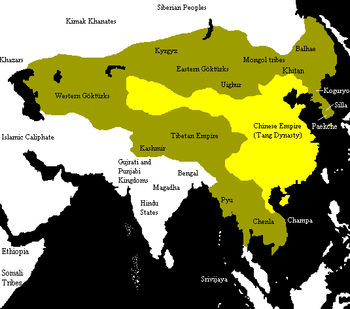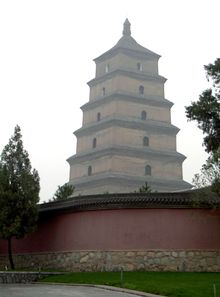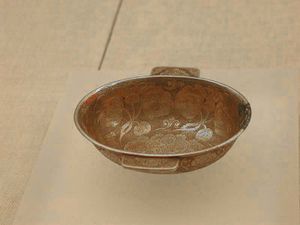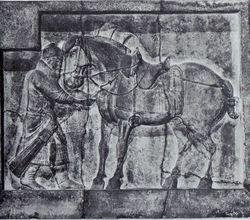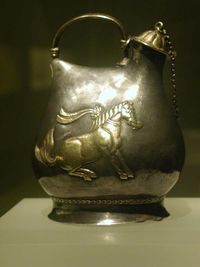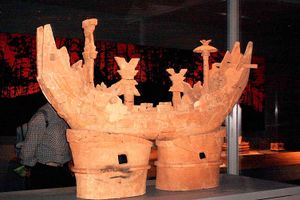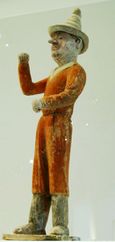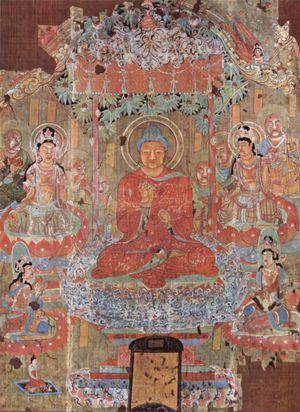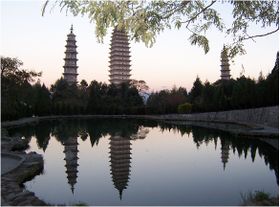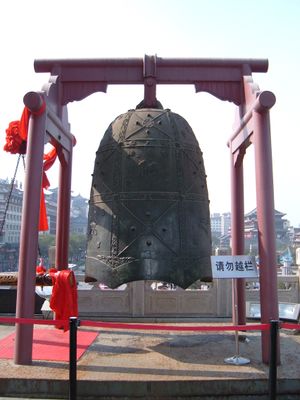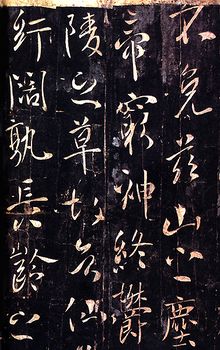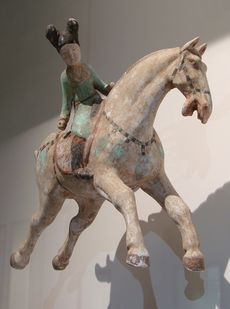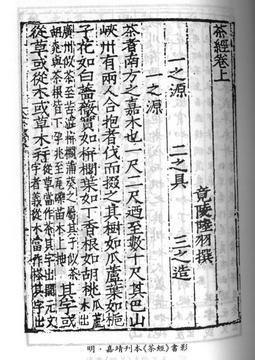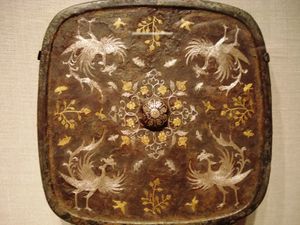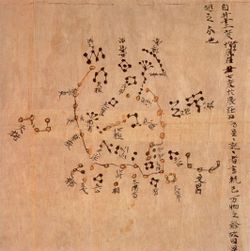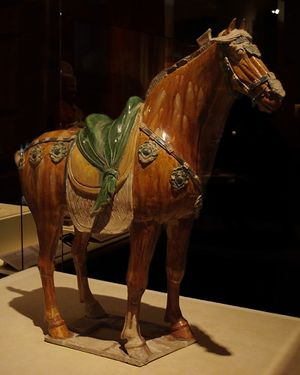أسرة تانگ
| ||||||||||||||||||||||||||||||||||||||||||||||||||||||||||||||||||||||||||||||||||||||||||||||||||||||||||||||||||||||||||||||||||||||||||||||||||||||||||||||||||||||||||||||||||||||||||||||||||||||||||||||||||||||||||||||||||||||||||||||||||||||||||
| ||||||||||||||||||||||||||||||||||||||||||||||||||||||||||||||||||||||||||||||||||||||||||||||||||||||||||||||||||||||||||||||||||||||||||||||||||||||||||||||||||||||||||||||||||||||||||||||||||||||||||||||||||||||||||||||||||||||||||||||||||||||||||
| ||||||||||||||||||||||||||||||||||||||||||||||||||||||||||||||||||||||||||||||||||||||||||||||||||||||||||||||||||||||||||||||||||||||||||||||||||||||||||||||||||||||||||||||||||||||||||||||||||||||||||||||||||||||||||||||||||||||||||||||||||||||||||
أسرة تانگ Tang Dynasty (صينية تقليدية: 唐朝; پنين: Táng Cháo; صينية وسطى: dhɑng[1]) (و.18 يونيو 618-4 يونيو 907) كانت أسرة امبراطورية حكمت الصين سبقتها أسرة سوي وتبعتها فترة الأسر الخمس والممالك العشر. أسستها عائلة لي Li (李), التي استولت على السلطة أثناء انحدار ثم سقوط امبراطورية سوي. الأسرة تخللتها لفترة قصيرة أسرة جو الثانية (16 اكتوبر 690-3 مارس 705) عندما استولت الامبراطورة وو جاو على العرش, لتصبح أول وآخر امبراطورة حاكمة, صينية تحكم الصين بنفسها (وليس بجانب أو باسم ذكر من عائلتها).
. . . . . . . . . . . . . . . . . . . . . . . . . . . . . . . . . . . . . . . . . . . . . . . . . . . . . . . . . . . . . . . . . . . . . . . . . . . . . . . . . . . . . . . . . . . . . . . . . . . . . . . . . . . . . . . . . . . . . . . . . . . . . . . . . . . . . . . . . . . . . . . . . . . . . . . . . . . . . . . . . . . . . . . .
التاريخ
التأسيس

خلفت «أسرة تانگ» في الحكم «أسرة سوي»، وكان أول حاكم منها هو «لي يوان» الذي كان يشغل منصباً مهماً في عهد أسرة «سوي». ومع أنه حاول إجراء إصلاحات إدارية، وأنشأ مصانع لسك العملة، وأعاد تنظيم القوانين في الدولة، فإن عهده اتصف باضطرابات وحروب أهلية وتنازع على السلطة بين النبلاء.
وفي خضم هذه الأحداث برز الحاكم الثاني من هذه الأسرة، وهو «لي شيه مين» المعروف باسم «تاي تسونغ»، فأجبر أباه «لي يوان» على النزول عن الحكم، وما لبث أن صار أقوى حاكم في تاريخ الصين القديمة. أحل «تاي تسونغ» السلام بين النبلاء المتناحرين، وقضى على منافسيه على العرش، ووحد أنحاء الامبراطورية، وتوسع نحو التبت وتركستان، وشق طرقات ربطت الصين بالهند وآسيا الوسطى، مما شجع التبادل التجاري والثقافي، وزاد ثراء الامبراطورية زيادة ملحوظة.
لم يكن ابنه «گاو تسونگ» الذي خلفه عام 649م بالقوة نفسها، إذ سيطرت على الحكم زوجته «وو هاو» التي ظلت بعد وفاته وتنصيب ابنه امبراطوراً عام 683م، الحاكم الفعلي، فحافظت على علاقات الأسرة الخارجية، وأعادت سيطرة الصين على التبت وتركستان، ورعت الآداب والفنون التي ازدهرت في عهدها ازدهاراً كبيراً.
خلفها حفيدها «زوان تسونغ» عام 712، وفي عهده وصلت الصين ذروة توسعها غرباً، إذ وصلت حتى باكترية وكشمير، لكن تمرد عليه «آن لوشان» أحد القادة العسكريين، واستولى على العاصمة «چانگآن»، وفرَّ الامبراطور إلى «سيتشوان» ولم يقمع هذا التمرد إلا في عهد «سو تسونگ» على استمرار حركات التمرد في أطراف الامبراطورية.
واستمر الضعف يدب في أوصال الدولة إلى أن جاء النصف الثاني من القرن التاسع، حين انهارت أسرة «تانغ»، وحلَّتْ محلها إمارات مستقلة، وظلت الحال كذلك حتى ظهور أسرة «سونغ» وتأسيسها حكماً مركزياً جديداً.
لئن كان عصر أسرة تانگ مليئاً بالحروب والنزعات الانفصالية، فإِنَّه كان عهداً مزدهراً في مجالات الثقافة والآداب والفنون، ففي عهدها ظهر أشهر شعراء الصين القديمة، مثل «لي بو» و«بوتشو إي»، وتذكر سجلات ذلك العهد أسماء أكثر من عشرين ألف شاعر عاشوا وقتذاك، وجرى استنباط نماذج شعرية جديدة إلى جانب بحور الشعر المعروفة سابقاً.
كذلك شهدت الصين انفتاحاً ثقافياً واضحاً، إذ دخلها المبشرون البوذيون والمسيحيون، وكانت موانئ الصين تعج بالبحارة الأجانب، وما يلفت النظر قوة الوجود العربي الإسلامي، إذ كوَّن العرب والمسلمون قوة اقتصادية كبيرة، وألَّفوا جالية مستقلة، تطبق عليهم أحكام الشريعة الإسلامية بدل القوانين الصينية، وكان مركزهم الرئيس مدينة «قوانغتشو» على الساحل الجنوبي للصين، ومازال «مسجد هوايشنگ» الذي بني وقتذاك قائماً حتى اليوم.
كان للرسم أثر أساسي في الحياة الثقافية، وكان رسامو البلاط من الشخصيات المرموقة في المجتمع. وقد وصلت من تلك الحقبة رسومات كثيرة تمثل صوراً للأباطرة والنبلاء ومشاهد من الحياة اليومية، وصوراً للجياد الأصيلة التي اهتم الأباطرة بتربيتها بعد أن أدركوا فائدتها في الحروب. كذلك شاع في تلك الحقبة نحت تماثيل ضخمة لبوذا عقب دخول البوذية إلى الصين، وتماثيل بالحجم الطبيعي لتوضع في قبور الأباطرة وعلية القوم. وتطور فن الخزف ليصير فناً ناضجاً بألوانه ورسومه واكتسب شهرة كبيرة. كما شهدت الاحتفالات والمظاهر الامبراطورية إحياءً وتطويراً للفرق الموسيقية القديمة، وفرق الرقص والغناء الخاصة بالبلاط والآلات الموسيقية، ودخلت الموسيقى الأجنبية (الغربية) إلى جانب الموسيقى المحلية.[2]
الإدارة والسياسة
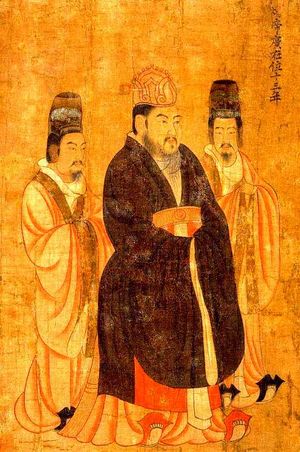
الإصلاحات الأولى

الاختبارات الامبراطورية
The examination system, used only on a small scale in Sui and Tang times, played a central role in the fashioning of this new elite. The early Song emperors, concerned above all to avoid domination of the government by military men, greatly expanded the civil service examination system and the government school system.
— [3]
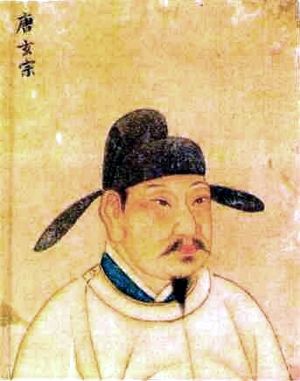
الدين والسياسة
الضرائب والتعداد
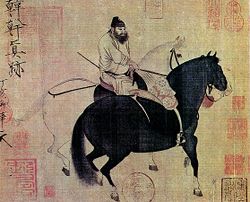
العسكر والسياسة الخارجية
المحميات والجوازي
. . . . . . . . . . . . . . . . . . . . . . . . . . . . . . . . . . . . . . . . . . . . . . . . . . . . . . . . . . . . . . . . . . . . . . . . . . . . . . . . . . . . . . . . . . . . . . . . . . . . . . . . . . . . . . . . . . . . . . . . . . . . . . . . . . . . . . . . . . . . . . . . . . . . . . . . . . . . . . . . . . . . . . . .
الجنود والتجنيد
المناطق التوركية والغربية
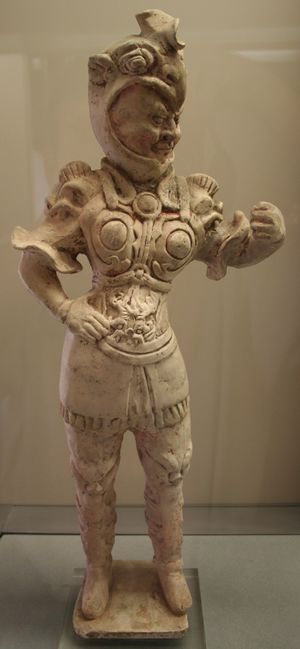
كوريا واليابان
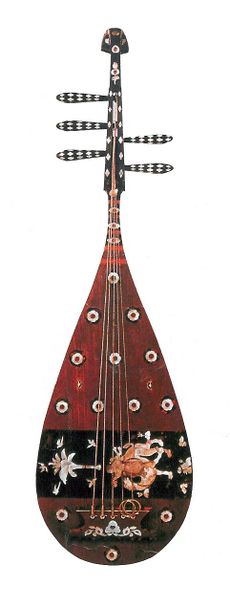
التجارة وانتشار الثقافة
طريق الحرير
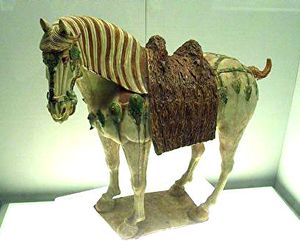
المواني والتجارة البحرية
الانحدار
تمرد آن شي والكارثة
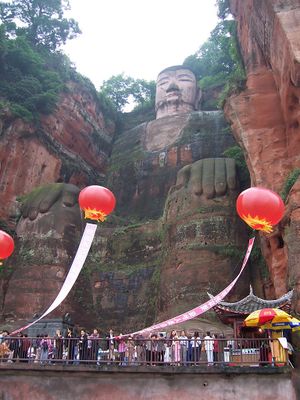

اعادة البناء والتعافي
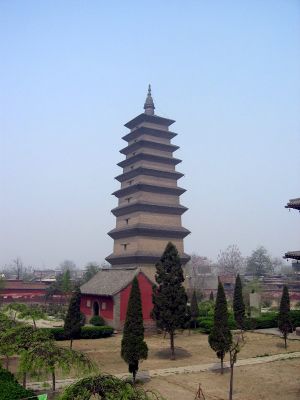
In the second year of the Taihe reign period [828 AD], in the second month...a standard model of the chain pump was issued from the palace, and the people of Jingzhao Fu (d footnote: the capital) were ordered by the emperor to make a considerable number of machines, for distribution to the people along the Zheng Bai Canal, for irrigation purposes.
— [5]
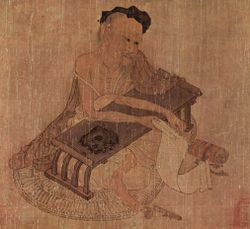
. . . . . . . . . . . . . . . . . . . . . . . . . . . . . . . . . . . . . . . . . . . . . . . . . . . . . . . . . . . . . . . . . . . . . . . . . . . . . . . . . . . . . . . . . . . . . . . . . . . . . . . . . . . . . . . . . . . . . . . . . . . . . . . . . . . . . . . . . . . . . . . . . . . . . . . . . . . . . . . . . . . . . . . .
الانهيار
سببت الحروب الحدودية والثورات في الولايات متاعب للصين في الفترة مابين 766 و 868 م. ومع هذا، استمرت أسرة تانغ في حالة ازدهار، وذلك بشكل كبير بسبب نظام الضرائب الجديد الذي أوجدته. فقد كان الصينيون في السابق مطالبين بدفع ضرائبهم، سخرة أو عينًا. أما النظام الجديد، فكان أكثر كفاءة من النظام القديم،كما كان يمد الحكومة بدخل متزايد.
وفي عام 868م، نشبت ثورة عسكرية قوية أخرى ضد أسرة تانغ، كما تمرد الفلاحون سنة 881م، بقيادة هوانغ تشاو، واستولوا على العاصمة تشانغأن. كذلك أخذ حكام الولايات واحدًا إثر الآخر يعلنون استقلالهم عن حكومة أسرة تانغ المركزية.
وأخيرًا، وفي سنة 907م، انتهى حكم أسرة تانغ. ومنذ تلك السنة، وإلى أن سيطرت أسرة سونج على الصين سنة 960م، حكمت البلاد أسر عسكرية لم تكن تعمر طويلاً.
المجتمع والثقافة
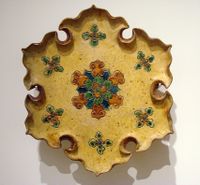
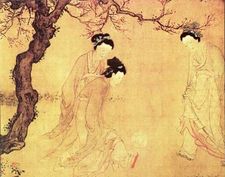
تشانگ آن, عاصمة تانگ
 مقالة مفصلة: تشانگ آن
مقالة مفصلة: تشانگ آن
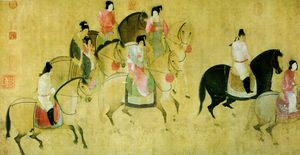
الأدب
人生不相見, It is almost as hard for friends to meet
動如參與商。 As for the morning and evening stars.
今夕復何夕, Tonight then is a rare event,
共此燈燭光。 Joining, in the candlelight,
少壯能幾時, Two men who were young not long ago
鬢髮各已蒼。 But now are turning grey at the temples.
訪舊半為鬼, To find that half our friends are dead
驚呼熱中腸。 Shocks us, burns our hearts with grief.
焉知二十載, We little guessed it would be twenty years
重上君子堂。 Before I could visit you again.
昔別君未婚, When I went away, you were still unmarried;
兒女忽成行。 But now these boys and girls in a row
怡然敬父執, Are very kind to their father's old friend.
問我來何方。 They ask me where I have been on my journey;
問答乃未已, And then, when we have talked awhile,
兒女羅酒漿。 They bring and show me wines and dishes,
夜雨翦春韭, Spring chives cut in the night-rain
新炊間黃粱。 And brown rice cooked freshly a special way.
主稱會面難, My host proclaims it a festival,
一舉累十觴。 He urges me to drink ten cups –
十觴亦不醉, But what ten cups could make me as drunk
感子故意長。 As I always am with your love in my heart?
明日隔山嶽, Tomorrow the mountains will separate us;
世事兩茫茫。 After tomorrow – who can say?
الدين والفلسفة
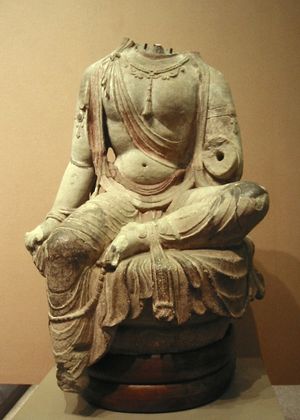
Tang women
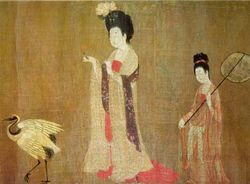
Tea, food, and necessities
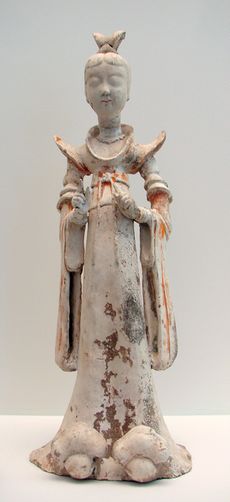
العلوم والتكنولوجيا والطب
الطباعة بالبلوكات الخشبية
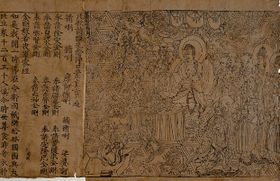
أعمال الساعات وحفظ الوقت
الحيل الميكانيكية والآلية
الطب
الهندسة الإنشائية
رسم الخرائط
الخيمياء وأسطوانات الغاز وتكييف الهواء
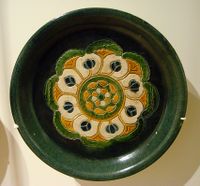
التاريخانية
انظر أيضاً
- Di Renjie
- Eight Immortals of the Wine Cup
- I Ching (monk)
- Imperial embassies to China
- Kaiyuan Za Bao (government newspaper for officials)
- قائمة أباطرة تانگ
- List of tributaries of Imperial China
- Nine Pinnacle Pagoda
- Qianling Mausoleum
- شجرة عائلة أسرة تانگ
- فن أسرة تانگ
- Wei Zheng
- Yan Zhenqing
- Di Renjie
- Islam during the Tang Dynasty
المصادر
^ a: During the reign of the Tang the world population grew from about 190 million to approximately 240 million, a difference of 50 million. See also medieval demography.
- ^ Karlgren, Grammata serica recensa, 1996.
- ^ لميس الخباز. "تانغ (أسرة ـ)". الموسوعة العربية.
- ^ Ebrey (1999), 145-146.
- ^ أ ب Ebrey (1999), 127.
- ^ Needham, Volume 4, Part 2, 347.
- ^ University of Virginia's 300 Tang Poems
- ^ Xi (1981), 464.
المراجع
- Bai, Shouyi (2003). A History of Chinese Muslim (Vol.2). Beijing: Zhonghua Book Company. ISBN 7-101-02890-X.
- Beckwith, Christopher I. (1987). The Tibetan Empire in Central Asia. Princeton University Press. ISBN 0-691-02469-3 (pbk)
- Benn, Charles. (2002). China's Golden Age: Everyday Life in the Tang Dynasty. Oxford University Press. ISBN 0-19-517665-0.
- Bernhardt, Kathryn. "The Inheritance Right of Daughters: the Song Anomaly?" Modern China (July 1995): 269–309.
- Bowman, John S. (2000). Columbia Chronologies of Asian History and Culture. New York: Columbia University Press.
- Brook, Timothy. (1998). The Confusions of Pleasure: Commerce and Culture in Ming China. Berkeley: University of California Press. ISBN 0-520-22154-0
- Chen, Yan (2002). Maritime Silk Route and Chinese-Foreign Cultural Exchanges. Beijing: Peking University Press. ISBN 7-301-03029-0.
- Cui, Mingde. (2005). The History of Chinese Heqin. Beijing: Renmin Chubanshe. ISBN 7-01-004828-2.
- Du, Wenyu. "Tang Song Jingji Shili Bijiao Yanjiu" ("Comparative Study of Tang and Song Dyansty's Economic Strength"). Researches in Chinese Economic History. 1998.4. ISSN 1002-8005.
- Bowman, John S. (2000). Columbia Chronologies of Asian History and Culture. New York: Columbia University Press.
- Ebrey, Walthall, Palais. (2006). East Asia: A Cultural, Social, and Political History. Boston: Houghton Mifflin Company. ISBN 0-618-13384-4.
- Ebrey, Patricia Buckley (1999). The Cambridge Illustrated History of China. Cambridge: Cambridge University Press. ISBN 0-521-43519-6 (hardback); ISBN 0-521-66991-X (paperback).
- Fairbank, John King and Merle Goldman (1992). China: A New History; Second Enlarged Edition (2006). Cambridge: MA; London: The Belknap Press of Harvard University Press. ISBN 0-674-01828-1
- Gernet, Jacques (1962). Daily Life in China on the Eve of the Mongol Invasion, 1250-1276. Translated by H.M. Wright. Stanford: Stanford University Press. ISBN 0-8047-0720-0
- Guo, Qinghua. "Yingzao Fashi: Twelfth-Century Chinese Building Manual," Architectural History: Journal of the Society of Architectural Historians of Great Britain (Volume 41 1998): 1-13.
- Hsu, Mei-ling. "The Qin Maps: A Clue to Later Chinese Cartographic Development," Imago Mundi (Volume 45, 1993): 90-100.
- Huters, Theodore. "From Writing to Literature: The Development of Late Qing Theories of Prose," Harvard Journal of Asiatic Studies (June 1987): 51-96.
- Karlgren, Bernhard. (1964). Grammatica serica recensa. Göteborg: Elanders Boktryckeri Aktiebolag.
- Kitagawa, Hiroshi and Bruce T. Tsuchida. (1975). The Tale of the Heike. Tokyo: University of Tokyo Press.
- Levathes (1994). When China Ruled the Seas. New York: Simon & Schuster. ISBN 0-671-70158-4.
{{cite book}}: Unknown parameter|fist=ignored (help) - Liu, Pean. (1991). 'Viewing Chinese ancient navigation and shipbuilding through Zheng He's ocean expeditions', Proceedings of the International Sailing Ships Conference in Shanghai.
- Liu, Zhaoxiang et al. (2000). History of Military Legal System. Beijing: Encyclopedia of China Publishing House. ISBN 7-5000-6303-2.
- Needham, Joseph. (1986). Science and Civilization in China: Volume 3, Mathematics and the Sciences of the Heavens and the Earth. Taipei: Caves Books, Ltd.
- Needham, Joseph. (1986). Science and Civilization in China: Volume 4, Physics and Physical Engineering, Part 2, Mechanical Engineering. Taipei: Caves Books Ltd.
- Needham, Joseph. (1986). Science and Civilization in China: Volume 4, Physics and Physical Technology, Part 3, Civil Engineering and Nautics. Taipei: Caves Books, Ltd.
- Needham, Joseph. (1986). Science and Civilization in China: Volume 5, Chemistry and Chemical Technology, Part 1, Paper and Printing. Taipei: Caves Books Ltd.
- Needham, Joseph (1986). Science and Civilization in China: Voluem 5, Chemistry and Chemical Technology, Part 4, Spagyrical Discovery and Invention: Apparatus, Theories and Gifts. Taipei: Caves Books Ltd.
- Reed, Carrie E. "Motivation and Meaning of a 'Hodge-podge': Duan Chengshi's 'Youyang zazu,'" Journal of the American Oriental Society (January-March 2003): 121-145.
- Richardson, H.E. (1985). A Corpus of Early Tibetan Inscriptions. Royal Asiatic Society. Hertford: Stephen Austin and Sons Ltd.
- Schafer, Edward H. (1963). The Golden Peaches of Samarkand: A study of T’ang Exotics. University of California Press. Berkeley and Los Angeles. 1st paperback edition: 1985. ISBN 0-520-05462-8.
- Shen, Fuwei. (1996). Cultural flow between China and the outside world. Beijing: Foreign Languages Press. ISBN 7-119-00431-X.
- Song, Yingxing, translated with preface by E-Tu Zen Sun and Shiou-Chuan Sun. (1966). T'ien-Kung K'ai-Wu: Chinese Technology in the Seventeenth Century. University Park: Pennsylvania State University Press.
- Stein, R.A. (1962). Tibetan Civilization; 1st English Edition, 1972. Stanford University Press. ISBN 0-8047-0806-1 (cloth); ISBN 0-8047-0901-7.
- Sun, Guangqi. (1989). History of Navigation in Ancient China. Beijing: Ocean Press. ISBN 7-5027-0532-5.
- Tang, Zhiba. (1991). 'The influence of the sail on the development of the ancient navy', Proceedings of the International Sailing Ships Conference in Shanghai.
- Wang Yongxing. (2003). Draft Discussion of Early Tang Dynasty's Military Affairs History. Beijing: Kunlun Press. ISBN 7-80040-669-5.
- Woods, Frances. (1996). Did Marco Polo go to China? US: Westview Press. ISBN 0-8133-8999-2.
- Wright, Arthur F. (1959). Buddhism in Chinese History. Stanford: Stanford University Press.
- Xu, Daoxun et al. (1993). The Biography of Tang Xuanzong. Beijing: People's Press. ISBN 7-01-001210-5.
- Xue, Zongzheng. (1992). A History of Turks. Beijing: Chinese Social Sciences Press. ISBN 7-5004-0432-8.
- Yu, Pauline. "Charting the Landscape of Chinese Poetry," Chinese Literature: Essays, Articles, Reviews (CLEAR) (December 1998): 71-87.
قراءات اضافية
- Chen, Guocan. "Hebei Sanzhen" ("Three Jiedushi of Hebei"). Encyclopedia of China, 1st ed.
- Chen, Zhen. "Jiedushi". Encyclopedia of China, 1st ed.
- de la Vaissière, E, Sogdian Traders. A History, Leiden : Brill, 2005. ISBN 90-04-14252-5
- Schafer, Edward H. (1967). The Vermilion Bird: T’ang Images of the South. University of California Press. Berkeley and Los Angeles.
- The “New T’ang History” (Hsin T’ang-shu) on the History of the Uighurs. Translated and annotated by Colin Mackerras.
وصلات خارجية
| Tang Dynasty
]].| Art of the Tang Dynasty
]].- The Tang Dynasty, Minnesota State University Emuseum
- The Tang Dynasty at the Metropolitan Museum of Art
- Home of 300 Tang Poems, University of Virginia
- The Tang Dynasty at AsianSpiritGallery.
- Paintings of Sui and Tang dynasities
| سبقه أسرة سوي |
الأسر الحاكمة في التاريخ الصيني 618 – 907 |
تبعه الأسر الخمس والممالك العشر |
- Pages using infobox country with unknown parameters
- Articles containing صينية-language text
- Articles containing Pinyin-language text
- Articles with hatnote templates targeting a nonexistent page
- CS1 errors: unsupported parameter
- أسرة تانگ
- تاريخ الصين
- بلدان سابقة في التاريخ الصيني
- دول سابقة في آسيا
- ملكيات سابقة في آسيا
- تأسيسات 618
- انحلالات 907
- امبراطوريات سابقة

